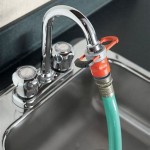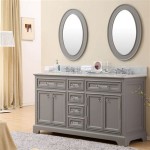Pendant Lights for Above Kitchen Sinks: Illumination and Design
The kitchen sink is a central hub for many household activities, ranging from food preparation and dishwashing to general cleaning tasks. Adequate and appropriate lighting is crucial in this area to ensure safety, efficiency, and visual comfort. Pendant lights, suspended luminaires that hang from the ceiling, offer an excellent solution for illuminating the space above the kitchen sink, combining functional light with aesthetic appeal. This article explores the various factors involved in selecting and installing pendant lights for above kitchen sinks, covering design considerations, technical specifications, and practical advice.
Understanding the Need for Targeted Lighting
The kitchen sink area usually requires a dedicated light source, independent of the overall ambient lighting within the kitchen. General kitchen lighting often leaves the sink area in shadow, particularly when someone is standing at the sink. This can lead to difficulty in performing tasks requiring visual precision, such as rinsing vegetables or washing dishes. Pendant lights address this issue by providing focused illumination directly where it is needed most. The targeted light improves visibility, reduces eye strain, and enhances safety during various kitchen activities. Furthermore, a well-placed pendant light can serve as a focal point, adding visual interest to the kitchen design.
The placement of overhead cabinets and potential obstructions can also influence the lighting needs above a kitchen sink. When cabinets are present, they can block ambient light sources, further emphasizing the need for dedicated task lighting. Pendant lights can be strategically positioned to circumvent these obstructions and deliver light to the areas most affected by shadows. This is especially important for sinks located in corners or along walls where natural light may be limited.
Aside from functional requirements, proper lighting above the kitchen sink contributes to the overall ambiance of the space. A well-lit sink area feels cleaner, more inviting, and more conducive to productive work. By carefully selecting the style and finish of the pendant light, one can create a cohesive aesthetic that complements the rest of the kitchen décor.
Factors to Consider When Choosing Pendant Lights
Selecting the right pendant light for above a kitchen sink involves considering several factors, including size, style, light output, and installation requirements. Careful planning and consideration of these factors will ensure that the chosen fixture meets both functional and aesthetic needs.
Size and Scale: The size of the pendant light should be proportionate to the size of the sink and the surrounding space. A pendant light that is too large can overwhelm the area, while one that is too small may not provide adequate illumination. For a standard-sized kitchen sink, a pendant light with a diameter of 8 to 12 inches is often appropriate. However, for larger sinks or kitchen islands, a larger pendant or a cluster of smaller pendants may be more suitable. It's important to consider the height of the ceiling when determining the optimal size of the fixture. In kitchens with low ceilings, a more compact or flush-mount fixture may be necessary to avoid obstructing the view or creating a sense of confinement.
Style and Design: Pendant lights come in a wide variety of styles, ranging from traditional and rustic to modern and minimalist. The style of the pendant light should complement the overall design of the kitchen. Consider the existing cabinetry, countertops, and other fixtures when selecting a pendant light. For example, a farmhouse-style kitchen might benefit from a pendant light with a metal shade and exposed hardware, while a modern kitchen might call for a sleek, minimalist pendant with a glass or acrylic diffuser. The finish of the pendant light is also important. Common finishes include brushed nickel, chrome, oil-rubbed bronze, and matte black. The chosen finish should coordinate with the other metal accents in the kitchen, such as the faucet and cabinet hardware.
Light Output and Color Temperature: The amount of light produced by the pendant light, measured in lumens, should be sufficient to illuminate the sink area effectively. The ideal light output will depend on the specific tasks performed at the sink and the overall lighting conditions in the kitchen. As a general guideline, a pendant light above a kitchen sink should provide at least 500 to 800 lumens. The color temperature of the light, measured in Kelvin, also plays a crucial role in the overall ambiance of the space. A warm white light (2700K to 3000K) creates a cozy and inviting atmosphere, while a cool white light (3500K to 4000K) provides a brighter, more energizing light that is ideal for task lighting. For kitchen sinks, a cool white or neutral white light is often preferred, as it provides better visibility and clarity. LED bulbs are a popular choice for pendant lights because they are energy-efficient, long-lasting, and available in a variety of color temperatures and light outputs.
Installation Considerations: Installing a pendant light above a kitchen sink typically requires some electrical work. It is essential to ensure that the electrical wiring is properly grounded and that the pendant light is installed in accordance with local electrical codes. If you are not comfortable performing electrical work yourself, it is best to hire a qualified electrician. The height of the pendant light is also important to consider. The bottom of the pendant light should be positioned at a height that allows for adequate illumination without obstructing the view or creating glare. As a general rule, the bottom of the pendant light should be approximately 30 to 36 inches above the countertop. However, this may vary depending on the height of the ceiling and the size of the pendant light.
Types of Pendant Lights Suitable for Kitchen Sinks
The market offers a diverse range of pendant light styles, each with unique features and advantages. Understanding the different types can help in making an informed decision based on individual needs and aesthetic preferences. The following are some common pendant light types suitable for above kitchen sinks:
Mini Pendants: These are small, compact pendant lights that are ideal for smaller sinks or for creating a cluster of lights. Mini pendants are often used in multiples to provide more focused illumination and to add visual interest to the space. They are available in a variety of styles and finishes, making them a versatile choice for any kitchen décor. Mini pendants are particularly well-suited for kitchens with low ceilings or limited space.
Glass Pendants: Glass pendants feature shades made of glass, which can be clear, frosted, or colored. Glass pendants provide a soft, diffused light that is ideal for creating a warm and inviting atmosphere. They are available in a variety of shapes and sizes, and they can be used in both traditional and modern kitchens. Clear glass pendants allow for maximum light output, while frosted glass pendants provide a more diffused and subtle light. Colored glass pendants can add a pop of color to the kitchen and create a unique focal point.
Industrial Pendants: Industrial pendants are characterized by their rugged, utilitarian design. They often feature metal shades, exposed hardware, and vintage-inspired details. Industrial pendants are a popular choice for kitchens with a rustic or industrial aesthetic. They provide a focused, directional light that is ideal for task lighting. Industrial pendants are typically made of durable materials, such as steel or aluminum, and they are designed to withstand the rigors of a busy kitchen.
Bowl Pendants: Bowl pendants feature a bowl-shaped shade that directs light downward. They are a versatile choice for kitchen sinks, as they provide both ambient and task lighting. Bowl pendants are available in a variety of materials, including glass, metal, and fabric. They can be used in both traditional and modern kitchens, and they are a good choice for those who want a pendant light that provides a balanced amount of light. The interior of the bowl often has a reflective finish to maximize light output.
Linear Pendants: Linear pendants are elongated fixtures that are ideal for lighting long kitchen islands or sinks. They typically feature multiple light sources arranged in a row. Linear pendants provide a consistent and even light distribution, making them a good choice for tasks that require precision. They are available in a variety of styles and finishes, and they can be used in both traditional and modern kitchens. Adjustable height options are often available to accommodate different ceiling heights.
Best Practices for Pendant Light Installation and Maintenance
Properly installing and maintaining pendant lights above the kitchen sink is crucial for ensuring safety, longevity, and optimal performance. Adhering to established electrical codes and following manufacturer instructions are paramount.
Safety Precautions: Before beginning any electrical work, it is essential to turn off the power to the circuit. Use a voltage tester to confirm that the power is off before touching any wires. Wear appropriate safety gear, such as insulated gloves and safety glasses. Never work on electrical wiring while standing on a wet surface. If you are not comfortable performing electrical work yourself, it is best to hire a qualified electrician. Regularly inspect the wiring and connections for any signs of damage or wear. Replace any damaged wiring or components immediately.
Installation Guidelines: Follow the manufacturer's instructions carefully when installing the pendant light. Ensure that the pendant light is securely mounted to the ceiling. Use appropriate mounting hardware for the type of ceiling material. Adjust the height of the pendant light to ensure that it provides adequate illumination without obstructing the view or creating glare. Use a level to ensure that the pendant light is hanging straight. Connect the wiring according to the electrical codes. Make sure all connections are secure and properly insulated.
Maintenance Tips: Regularly clean the pendant light to remove dust and grime. Use a soft cloth and mild detergent. Avoid using abrasive cleaners, as they can damage the finish. Check the light bulb regularly and replace it when necessary. Use the correct type of light bulb for the pendant light. Do not exceed the maximum wattage specified by the manufacturer. Inspect the wiring and connections periodically for any signs of damage or wear. Tighten any loose connections. If you notice any problems with the pendant light, such as flickering or dimming, have it inspected by a qualified electrician.
By carefully considering the factors outlined above and following the guidelines for installation and maintenance, one can successfully incorporate pendant lights into the kitchen sink area, enhancing both the functionality and the aesthetics of this important workspace.

Choosing The Best Light Over Your Kitchen Sink Steel Lighting Co

Choosing The Best Light Over Your Kitchen Sink Steel Lighting Co

Pendant Over The Kitchen Sink Yay Or Nay Plotted Lights

Best Over The Sink Kitchen Lighting Ideas Lightlady Studio

Pendant Over Kitchen Sink Design Ideas

A Light For My Kitchen Sink Beneath Heart

28 Over Kitchen Sink Lighting Ideas Inspirations Remodel Design

Over Sink Light Fixture Clearance Kitchen

Lighting Over Kitchen Sink Design Ideas

17 Kitchen Above Sink Lights Ideas Light







